As a supply chain leader, your calendar is dictated by lead times, transit schedules, and delivery windows. You plan in weeks and months, constantly battling a sea of variables to keep operations flowing. But what if you could reclaim that time? What if the constant stress of managing rigid, slow-moving logistics could be replaced with agility and control? This isn’t a far-off dream; it’s the reality of a new operational model: adaptive growth logistics.
The traditional approach to logistics is often a source of significant friction. A recent survey found that over 65% of supply chain professionals report high levels of stress, with operational inefficiencies being a primary cause. This pressure comes from being locked into inflexible contracts, dealing with partners who can’t scale with your demand, and lacking the visibility needed to make proactive decisions. Adaptive growth logistics, powered by the right Third-Party Logistics (3PL) partner, offers a direct solution to this chronic stress. It’s about building a supply chain that bends without breaking, saving you not just money, but months of valuable time and energy.
Differentiating 3PLs: From Rigid Vendor to Adaptive Partner
Not all 3PLs are created equal. Many operate on a static model: you sign a long-term contract for a fixed amount of space and a predetermined set of services. This works until your needs change. A sudden spike in demand, a new product launch, or an unexpected disruption can leave you scrambling. This is where the difference between a standard vendor and an adaptive partner becomes painfully clear.
An adaptive 3PL functions as an extension of your own team, building a logistics framework designed for growth and flexibility. Instead of offering a one-size-fits-all solution, they provide a scalable infrastructure that can expand or contract based on your real-time needs. How can you tell if your current 3PL is a true adaptive partner or just a space provider? Ask yourself: when was the last time your partner proactively suggested a way to improve your efficiency or cut costs?
The Core Pillars of Adaptive Logistics
Adaptive growth logistics is built on a foundation of flexibility, technology, and strategic foresight. It moves beyond the simple “store and ship” model to create a dynamic ecosystem that anticipates challenges and seizes opportunities.
1. Scalability On-Demand
For a growing business, demand is rarely predictable. Seasonal peaks, successful marketing campaigns, or new market entries can cause order volume to surge. A traditional 3PL might struggle to handle this influx, leading to fulfillment delays, backorders, and dissatisfied customers. Studies show that a single negative delivery experience can prevent over 80% of customers from shopping with a brand again.
An adaptive logistics partner prepares for this variability. They offer flexible warehousing solutions, allowing you to scale your footprint up or down without the penalty of a broken contract. Their labor models are designed to ramp up staffing during peak seasons and scale back during slower periods, ensuring you only pay for what you use. This on-demand scalability eliminates the stress of capacity planning and allows you to focus on growth, confident that your logistics can keep pace. Is your current 3PL relationship helping you scale effectively, or holding you back?
2. Technology-Driven Visibility
You can’t adapt to what you can’t see. A lack of real-time visibility is a major source of logistics stress. When you don’t know where your inventory is, the status of an order, or the performance of your carriers, you’re operating in the dark. This forces you into a reactive mode, constantly putting out fires instead of preventing them.
Modern adaptive 3PLs invest heavily in technology to provide a single source of truth. Their platforms integrate seamlessly with your own systems, offering:
- Unified Inventory Management: A real-time view of inventory levels across all locations, preventing stockouts and overstocks.
- End-to-End Order Tracking: Complete visibility from the moment an order is placed to final delivery, empowering your customer service teams.
- Performance Dashboards: Actionable data on key metrics like on-time delivery rates, order accuracy, and cost-per-shipment.
This transparency cuts months off your supply chain stress by replacing uncertainty with data-driven confidence. It shortens the time spent tracking down information, resolving issues, and manually compiling reports.
3. Proactive Risk Mitigation
Supply chain disruptions are no longer a matter of if, but when. Geopolitical events, natural disasters, and port congestion can derail even the best-laid plans. A rigid supply chain has single points of failure that can bring your entire operation to a halt. The cost of these disruptions is staggering, with some estimates placing the financial impact in the trillions globally.
An adaptive logistics strategy is inherently designed for resilience. By working with a 3PL that has a diverse network of facilities and carrier relationships, you can build redundancy into your supply chain. If one transportation lane is blocked, an adaptive partner can quickly pivot to an alternative. If one warehouse is at capacity, they can shift inventory to another location. This multi-node approach minimizes the impact of localized disruptions, ensuring business continuity. Does your logistics strategy have a Plan B and C, or is it reliant on a single, fragile path?
How an Adaptive Approach Saves You Time and Reduces Stress
The benefits of adaptive growth logistics go beyond simple cost savings. The real value lies in the time and mental energy it gives back to you and your team.
Cutting Down on Administrative Burden
Think about the hours your team spends managing a difficult vendor relationship. The phone calls chasing down order statuses, the emails disputing invoices, and the meetings to address performance issues all add up. A true adaptive partner streamlines these processes through technology and proactive communication. Automated reporting, integrated billing, and a dedicated account manager who understands your business can eliminate weeks of administrative churn over the course of a year.
Accelerating Speed to Market
When your logistics are agile, you can move faster as a business. Launching a new product or entering a new region becomes less daunting when you don’t have to spend months negotiating new warehouse leases or vetting new carriers. An adaptive 3PL allows you to tap into their existing infrastructure, dramatically shortening your go-to-market timeline. This speed can be a powerful competitive advantage, allowing you to capture market share while your competitors are still tangled in logistical red tape.
Enabling Strategic Focus
Perhaps the most significant benefit is the shift from tactical to strategic thinking. When you’re not bogged down by the daily stress of operational fires, you have the bandwidth to focus on what really matters: optimizing your network, improving your customer experience, and driving long-term growth. An adaptive 3PL handles the tactical execution, freeing you up to be the supply chain leader your business needs. How much more could you accomplish if you could reclaim 10 hours of your work week from operational troubleshooting?
Making the Switch: Choosing the Right Adaptive Partner
Transitioning to an adaptive logistics model requires finding a 3PL partner with the right capabilities and culture. Look beyond the price quote and evaluate potential partners on their ability to deliver genuine flexibility and growth support.
Key Questions to Ask a Potential 3PL Partner:
- How do you handle sudden spikes in order volume? What does your labor and space flexibility look like?
- What technology platform do you use, and how will it integrate with our systems to provide real-time visibility?
- Can you provide case studies of how you’ve helped clients navigate supply chain disruptions?
- What is your process for continuous improvement? How will you proactively identify opportunities to improve our efficiency?
The right partner won’t just answer these questions; they will demonstrate a deep understanding of your business and a clear strategy for supporting your growth.
Stop Stressing, Start Adapting
The old way of managing logistics is a recipe for burnout. It’s rigid, reactive, and leaves you vulnerable to a world of constant change. Adaptive growth logistics offers a better path forward. By choosing a 3PL partner that provides on-demand scalability, technology-driven visibility, and proactive risk mitigation, you can build a supply chain that is not a source of stress, but a source of competitive strength.
You can cut months off your supply chain stress, reclaim your time, and lead your organization with confidence and strategic vision. The future of logistics is agile, and it’s time to make it your reality.


